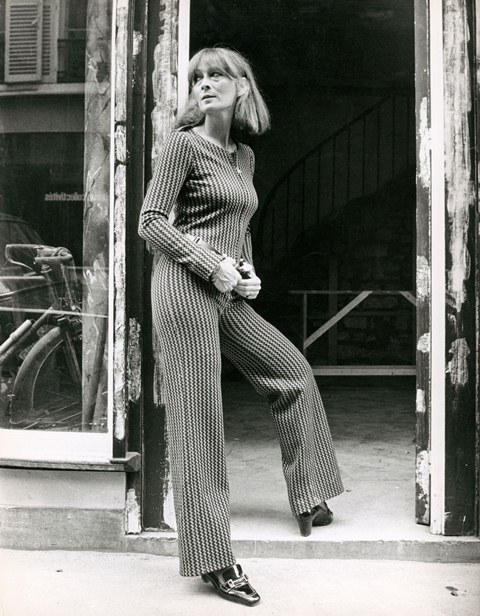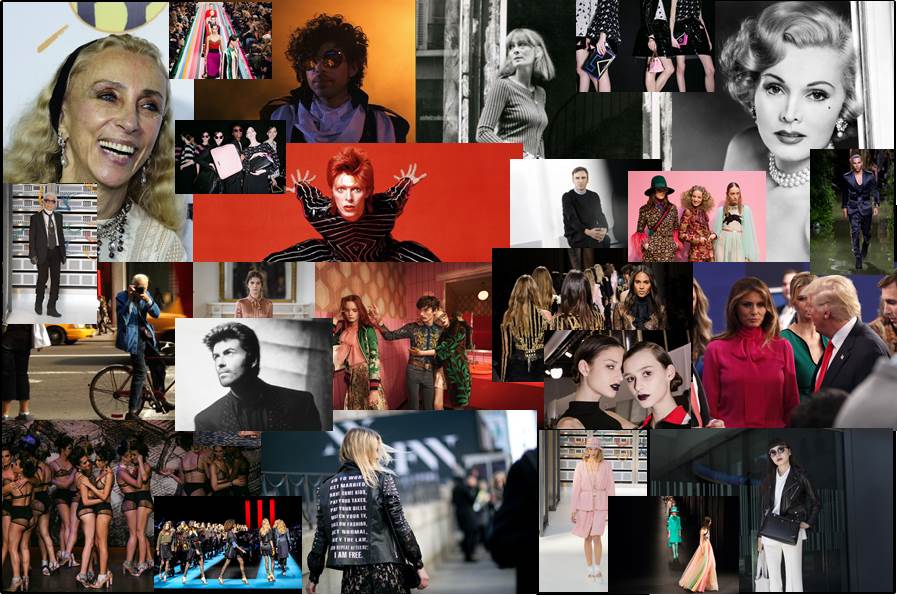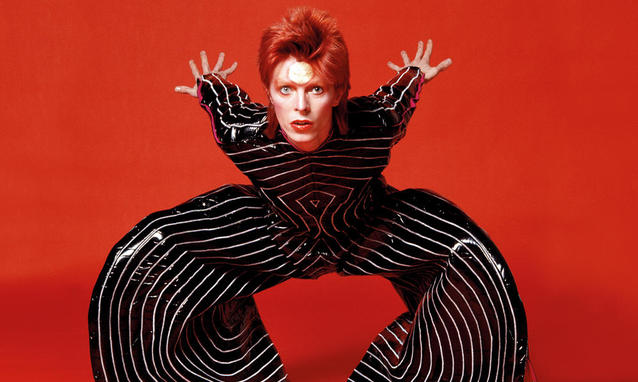A Year in the Industry
A Year in the Industry
This past year in fashion, and the world at large, has been eventful to say the least. Fashion houses have changed hands, some closed, others lost their creators, while creatives and designers have moved through the ranks to establish a new order. Sadly, many individuals who helped shape fashion died in 2016, ranging from writers and photographers to designers and performers.
Celebrities/Bloggers/Collaborations
Celebrity collaborations and collections were announced with regularity over the past year, ranging from singers like Rihanna and Beyonce, to models including Gigi Hadid, Alexa Chung and Natalie Westling. Bloggers such as The Blonde Salad’s Chiara Ferragni have begun selling their own designs, others partnering with brands to either collaborate or promote, the way ManRepeller has. While this isn’t new, the presence of brand sponsored content on social media has skyrocketed – celebrities and social media gurus alike are now considered brand ambassadors, offering products to new audiences, and offering new audiences to brands.
Beyond collaborations, bloggers and independent websites offer a fresh perspective. The information and style they curate is for a more specific audience than many traditional fashion publishers can offer; an aesthetic or mood can be shared, versus catering to everything.
Changes to the Industry – Speed, Fashion Shows, Deaths
2016 proved to be an especially fast year in fashion, between the changes to the fashion cycle itself and the transitions in creative control. Fashion shows and the traditions of fashion in general are changing across the field as designers opt for unconventional shows, choose to forgo presenting for certain seasons, or choose to instead use photography or video to better showcase the clothing to buyers. Several designers, Tommy Hilfiger and Rebecca Minkoff included, have moved the location of their fashion shows from traditional capitals such as New York, to new locals such as Los Angeles, California, a move clearly aimed at garnering the attention and courting the buying power of a wider, trendier audience.
The implementation of see-now, buy-now has pulled the show cycle back a season for several houses, making the designs readily available for consumers, but shifting the purpose of the fashion show in the process. While this democratization has offered relief or benefit to some, it has also increased the stress and workloads for creatives, manufacturers, and more. Fast fashion has been given a pass to go faster, increasing the waste and pressure on both the environment and garment workers.
This particular acceleration does not apply pressure across all houses – those like Dior, Chanel, Armani or Gucci for example. Raf Simons was one of the most notable designers to walk away from his position over the last several years, leaving the rigorous workload at Dior, seeming to open the floodgates for a torrent of departures and arrivals in creative personnel. Among his reasons for leaving was the stress and pressure the house was under to produce for each season, as well as the restrictions his creative control was allowed. Several other designers and creative directors have made moves since that indicate a desire for more autonomy and fewer creative restrictions in their practices. Fashion houses including Brioni, Calvin Klein, Lanvin and Saint Laurent have all seen this fluctuation in creatives, and one would hope these changes would soon wind down considering how many there were in 2016 alone, but there may need to be changes in the fashion schedule first.
The numerous shifts in leadership in 2016 cannot be solely attributed to those reasons. We seem to be in the midst of a changing of the guards – many designers and leaders are moving on, or aging out in some cases, leaving space for inevitable changes. CEO’s, creative directors and more departed at breakneck speeds, some like Christopher Bailey at Burberry simply going back to solely being the creative director instead of being interim CEO as well.
 In other cases, there have been unfortunate deaths across the industry this year. Designers Sonia Rykiel, Maria Mandelli, André Courrèges, James Galanos and Richard Nicoll passed away this year, each passage making clear how inspirational they had been for so many. The passing of performers David Bowie and Prince shook the world; those in fashion remembered them for transcending boundaries with their art, revolutionizing fashion from the stage. The death of legendary photographer Bill Cunningham, known for capturing fashion on the streets of New York, caused an eruption from those who had been touched even in small ways by his work. The passing of Nancy Reagan and Zsa Zsa Gabor brought back images of glamour that defined each woman and influenced the style of many others. Vogue lost two great editors, Susan Train and Franca Sozzani, remembered for their distinct and transformative marks on the field. Each passing picked away at the mounting gap left in the industry, a space that will take time to fully heal.
In other cases, there have been unfortunate deaths across the industry this year. Designers Sonia Rykiel, Maria Mandelli, André Courrèges, James Galanos and Richard Nicoll passed away this year, each passage making clear how inspirational they had been for so many. The passing of performers David Bowie and Prince shook the world; those in fashion remembered them for transcending boundaries with their art, revolutionizing fashion from the stage. The death of legendary photographer Bill Cunningham, known for capturing fashion on the streets of New York, caused an eruption from those who had been touched even in small ways by his work. The passing of Nancy Reagan and Zsa Zsa Gabor brought back images of glamour that defined each woman and influenced the style of many others. Vogue lost two great editors, Susan Train and Franca Sozzani, remembered for their distinct and transformative marks on the field. Each passing picked away at the mounting gap left in the industry, a space that will take time to fully heal.
Shifts in Political, Economic Landscapes, Influences on Fashion
2017 represents hope for many, a symbolic renewal and movement from what has been a devastating year for some. While leaving 2016 in the past will certainly offer a reprieve in certain ways, 2017 will still see the effects of the events of the past year. The resounding echo throughout the industry is how slow 2016 has been for retail, especially luxury fashion. A dip in the market as seen this year has not occurred since 2009, and has in part been attributed to increased consumer awareness.
One benefit of the growth of e-commerce is the options consumers are now privy to – greater choice regarding both the product and the provider – and in turn has put pressure on the retailers. Consumers have also gained a greater awareness of where their products are coming from, who is making these products, and the ethics surrounding the process in general. This combined with increased transparency allows concerned shoppers to be more discerning about who they purchase from, in turn instigating an increase in companies that use ethically sourced goods, and a movement in others to make changes for the better.
Shifting political landscapes worldwide have left many in doubt regarding the coming years. Some look forward with optimism, citing change and positive potential, while others cast doubt ahead into the uncertainty of the future. Political shifts in America and the UK especially, as well as the heightened awareness of terrorism globally and the economic unrest in several markets, have already exacerbated the already tense feelings surrounding these issues.
Shifting politics have already hinted at changes that will take effect, ranging from stricter international trade, to restricted travel or visa availability – take the UK’s choice to leave the EU as a firm example thereof. Perhaps it is too early to pass judgement, but it is not too early to see the inevitable repercussions.
Publishing has moved heavily into the digital realm, a course several industry officials have already confirmed it will stay. Some magazines have become available almost exclusively online, Teen Vogue being among them. The publication will offer quarterly issues on newsstands, all others to be published online.
E-commerce has become more popular as well over the last year, a method that allows for a direct-to-consumer output of products, negating the middle man for some companies. While online shopping has not replaced shopping in person, and looks like it won’t for some time, online sales have risen and are expected to continue rising over time. The prevalence of phones, tablets and personal computers has made accessing audiences easier for brands, in turn necessitating the ability to digitally deliver the products offered in order to capitalize on this access.
Predictions
Unpredictability has been a major issue in fashion throughout 2016 – be it political, economic, consumer desires and demands, or otherwise – and this is set to continue into 2017.
Seeing as fashion purchases are very often emotional ones, it comes as no surprise that geopolitical volatility over the past 12 months have caused concerned customers to pull back from making investments in fashion. Reports of falls in luxury purchases have made headlines for months, specifically referring to Asian buyers, due in part to instability in the Chinese stock market. The terrorist attacks in Paris and other areas of Europe have had definitive effects on the markets there as well, deterring customers from travelling to capitals like Paris to shop.
It has also been seen that, across the board, a focus has been driven from materiality towards experience; consumers no longer want to spend in order to have, rather they want to spend in order to experience, whether that results in growth as a person or in relaxation after a week in the mountains or a day at the spa.
Sustainability and transparency are two interconnected areas that are sure to see increased scrutiny in the future – consumers have become more concerned about the environment and how workers are treated from beginning to end, creating a push for innovation and improvement in both areas.
What exactly consumers want has been another issue for retailers – even with the ability to collect and interpret incredible amounts of data, hitting the mark has not always been as simple.
The attraction of sales and discounts cannot be – well, discounted. Consumers have grown used to paying less than what the item originally cost, and some are simply unwilling to make a purchase otherwise. In certain cases, this seems only logical – why buy a full-priced item from a store when you know you can get it at a reduced cost during quarterly sales? Many companies have come to rely on outlet stores because of this, creating lines specific to this price range versus selling overflow stock of the regular merchandise, in order to take advantage of the lower price margin and the consumer-dictated demand for goods in this price range. The downside is that for those companies who accommodate the demand for price reductions run the risk of getting caught in a “race for the bottom,” and overall damage to the brand’s value.
There seems an overall move towards what is best for the consumer: more personalization in products, better quality, more options, lower costs – the list goes on. 2017 will no doubt see continued changes and the development of those changes already in the works.
A Year in the Industry



